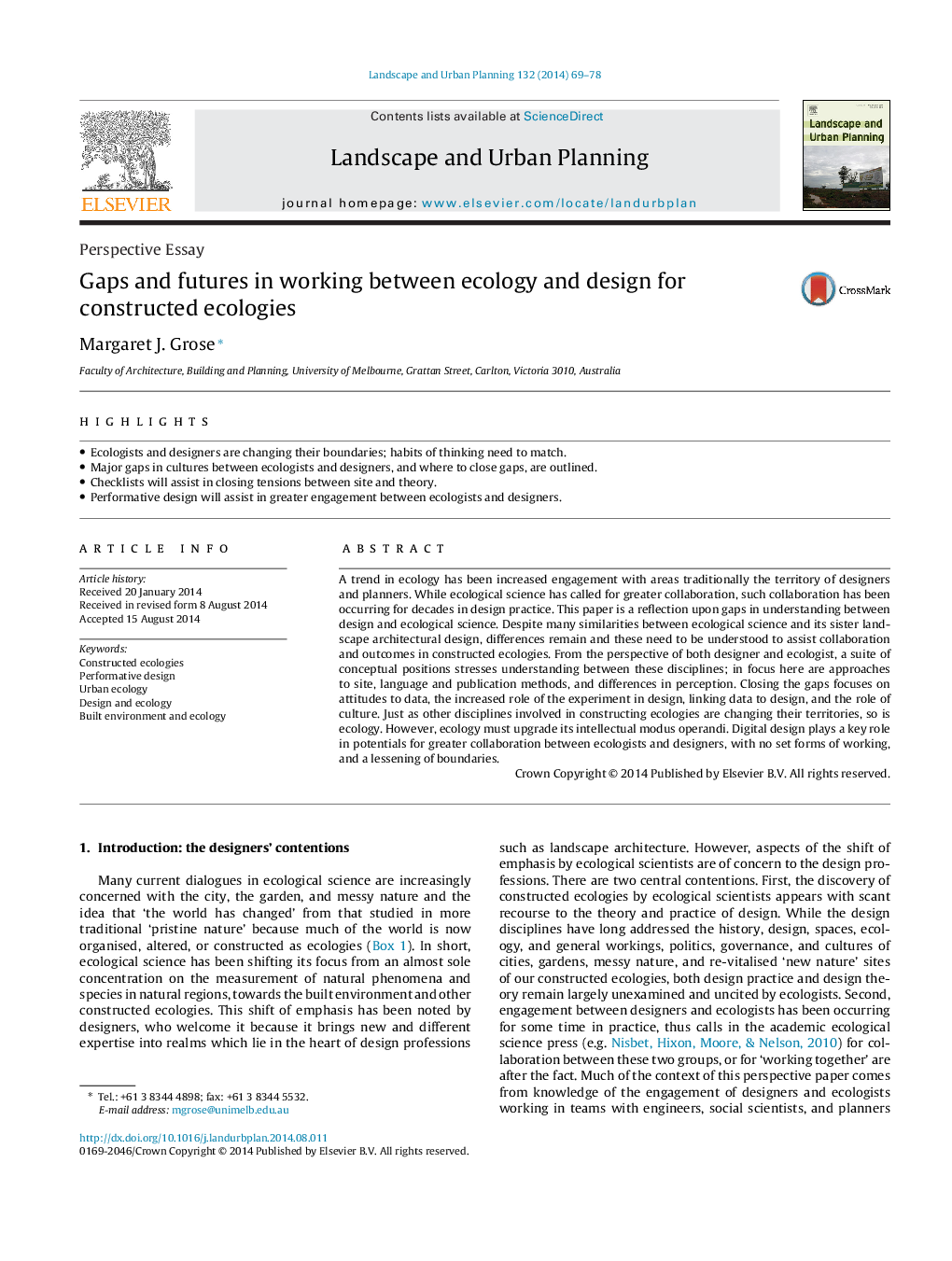| Article ID | Journal | Published Year | Pages | File Type |
|---|---|---|---|---|
| 7461234 | Landscape and Urban Planning | 2014 | 10 Pages |
Abstract
A trend in ecology has been increased engagement with areas traditionally the territory of designers and planners. While ecological science has called for greater collaboration, such collaboration has been occurring for decades in design practice. This paper is a reflection upon gaps in understanding between design and ecological science. Despite many similarities between ecological science and its sister landscape architectural design, differences remain and these need to be understood to assist collaboration and outcomes in constructed ecologies. From the perspective of both designer and ecologist, a suite of conceptual positions stresses understanding between these disciplines; in focus here are approaches to site, language and publication methods, and differences in perception. Closing the gaps focuses on attitudes to data, the increased role of the experiment in design, linking data to design, and the role of culture. Just as other disciplines involved in constructing ecologies are changing their territories, so is ecology. However, ecology must upgrade its intellectual modus operandi. Digital design plays a key role in potentials for greater collaboration between ecologists and designers, with no set forms of working, and a lessening of boundaries.
Keywords
Related Topics
Life Sciences
Agricultural and Biological Sciences
Ecology, Evolution, Behavior and Systematics
Authors
Margaret J. Grose,
